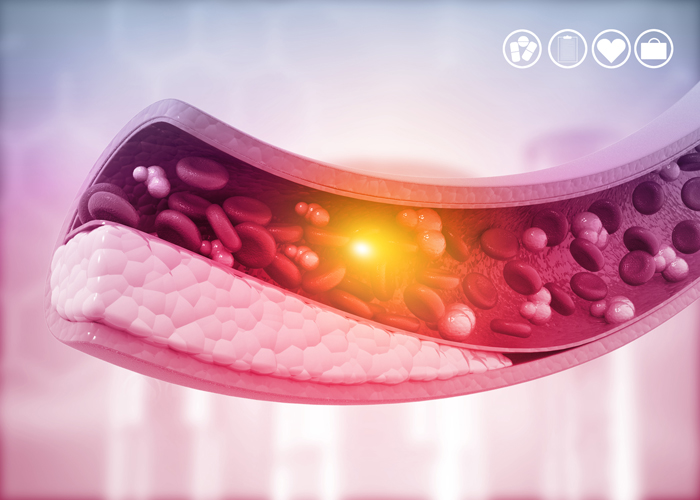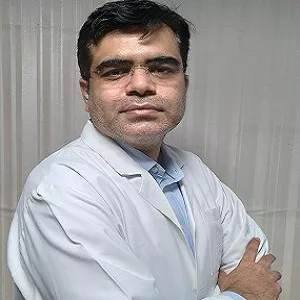Treatment for Thrombosis in Chunni-ganj, Kanpur
DVT (deep vein thrombosis) is a potentially fatal condition in which a blood clot develops in a vein deep within the body. A blood clot is a clump of blood that has hardened. Deep vein blood clots most commonly occur in the thigh or lower leg, but they can also occur in other parts of the body. Thromboembolism, post-thrombotic syndrome, and postphlebitic syndrome are some of the other names for this illness.

Symptoms of DVT
Deep vein blood clots most often develop in the thigh or lower leg, but they can happen elsewhere in the body. Other names for this disease include thromboembolism, post-thrombotic syndrome, and postphlebitic syndrome.
- Swelling in one side of your foot, ankle, or leg.
- Cramping in the affected leg, which commonly starts in the calf
- Severe and inexplicable foot and ankle pain
- A patch of skin that is noticeably warmer than the skin around it
- The skin around the affected area becomes pale, reddish, or bluish in hue.
People who have a DVT in their upper extremity, or a blood clot in their arm, may not have any symptoms. If they do, the following are some of the most prevalent symptoms:
- Neck ache
- Shoulder ache
- Swelling in the arm or hand is a common ailment.
- Pain that goes from the arm to the forearm
- Weakness in the hand
When to See a Doctor?
Contact a doctor in Kanpur, if you develop signs or symptoms of DVT. Seek emergency medical treatment if you develop signs or symptoms of a pulmonary embolism (PE), a life-threatening consequence of deep vein thrombosis.
The following are some of the warning signs and symptoms of a pulmonary embolism:
- Shortness of breath that comes on suddenly
- When you take a deep breath or cough, your chest pain or discomfort gets greater.
- Feeling dizzy or lightheaded, or fainting
- The heart beats quickly.
- Breathing quickly
- I'm coughing blood.
Prevention:-
Deep vein thrombosis can be prevented by taking the following steps:
- Sitting still is a bad idea. If you've had surgery or have been on bed rest for any reason, try to get up and moving as soon as possible. If you're going to be sitting for a long time, don't cross your legs because this can cut off blood flow. If you're driving a long distance, take a break every hour or so and go for a stroll.
- If you're flying, get up and move around every now and then. If you're unable to do so, work on your lower legs. Raise and lower your heels on the floor while maintaining your toes on the floor, then raise your toes while keeping your heels on the floor.
- Please don't smoke. DVT is more likely to occur if you smoke.
- Exercise and maintain a healthy weight.
Treatment
The therapy of DVT has three main goals.
- Stop the clot from spreading.
- Prevent the clot from rupturing and spreading to the lungs.
- Reduce your chances of developing a DVT in the future.
The following is a list of DVT treatments:
One of the treatment options for DVT is blood thinners. The most frequent therapy for DVT is anticoagulants, often known as blood thinners. Existing blood clots aren't dissolved by these therapies, but they can help prevent them from growing larger and reduce your risk of getting more.
Clot busters are substances that dissolve clots. These medicines, also known as thrombolytics, may be recommended if you have a more dangerous kind of DVT or PE, or if previous treatments aren't working.
Request an appointment at Apollo Spectra Hospitals, Kanpur
Call 1860-500-2244 to book an appointment
Conclusion:
DVT, or deep vein thrombosis, is a life-threatening condition caused by a blood clot in a deep vein. Swelling, discomfort, and soreness, especially in the legs, are common symptoms. Immobility, hormone treatment, and pregnancy are all risk factors.
UEDVT is a kind of deep vein thrombosis that causes blood clots to develop in the neck or arms. This kind of DVT can also result in consequences comparable to DVT, such as a PE (pulmonary embolism).
The popliteal vein is a large blood artery that travels up the back of the knee, bringing blood from the lower leg back to the heart. Thrombosis can develop in this vein, resulting in a blockage and limiting blood flow to the lower limbs.
Symptoms
Our Doctors
DR. ACHINTYA SHARMA
MBBS, MS,MCh...
| Experience | : | 7 Yeras Experience |
|---|---|---|
| Speciality | : | Vascular Surgery... | Location | : | Chunni Ganj |
| Timings | : | Available by prior a... |
Our Top Specialities
NOTICE BOARD
CONTACT US
CONTACT US
 Book Appointment
Book Appointment



.svg)
.svg)
.svg)
.svg)








